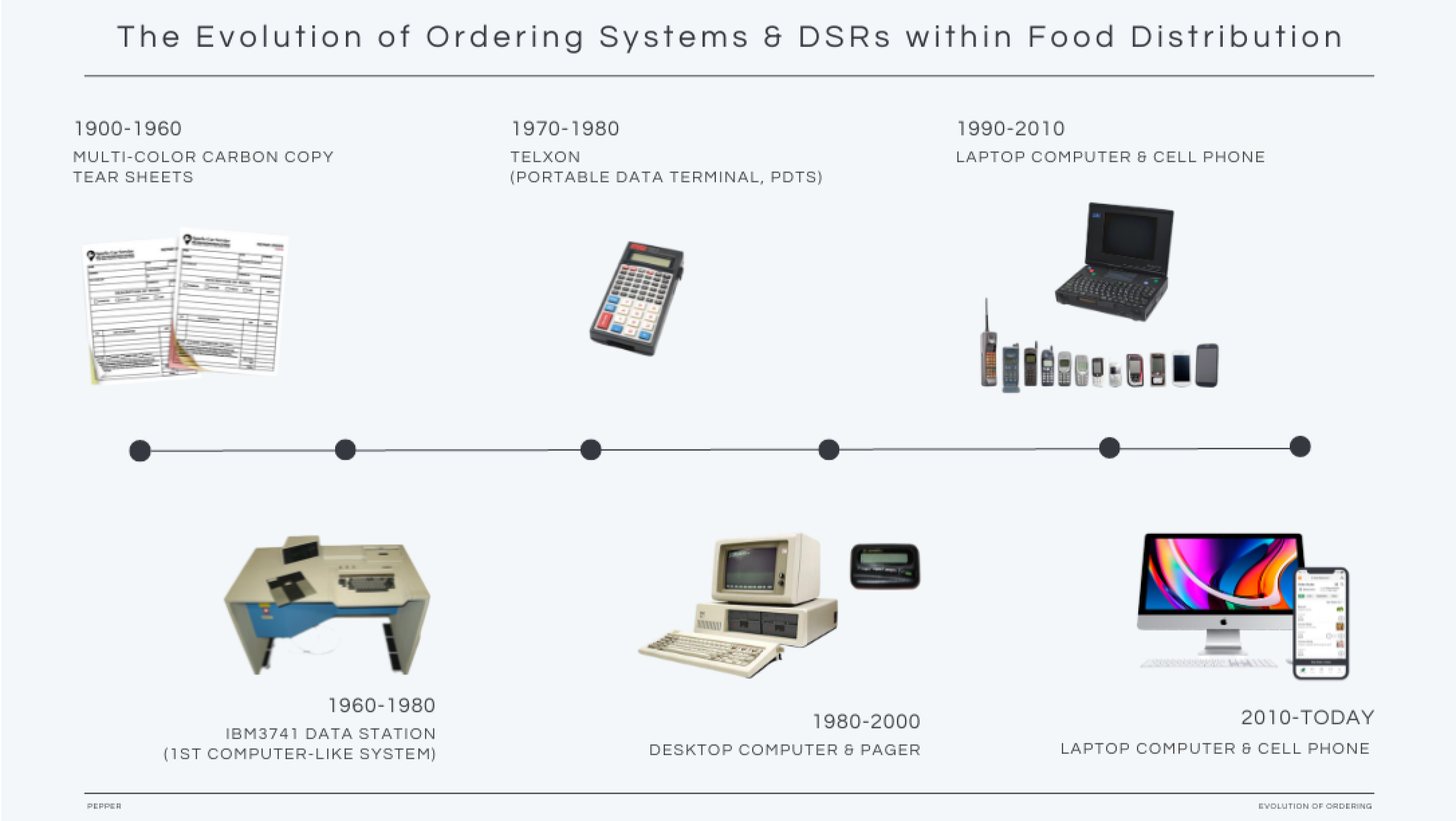The food distribution industry has undergone significant transformations over the past century. Advancements in technology and changes in consumer behavior has driven the evolution of ordering systems and sales reps (DSRs).
The early 1900s ordering process was very manual. DSRs visited operators to take orders. DSRs brought their 3-ring binder price books— known as “Bibles”—and recorded orders on multi-color carbon copy tear sheets. One sheet stayed with the customer and the other copy returned to the distributor's warehouse to be fulfilled.
Item prices were updated weekly. Reps tore out binder sheets with outdated prices and replaced with updated ones for the week ahead. This limited reps to selling items in their price book for that week and selling to customers within close proximity. Additionally, distributors lost money on massive orders if a PO came in during a low-priced week.
By the 1960s, complexity grew and distributors had to manage growing numbers of SKUs and customers. Distributors adopted the first computer-powered ordering systems. Computers enabled distributors to internally maintain databases of items and print their own catalogs. Orders were keyed into these systems at the end of each day and cross-referenced by office staff.
By the late 1970s-early 1980s, Portable Data Terminals (PDTs) and Telzons were introduced. Item numbers, quantities, and prices were keyed into the Telzon, a microphone on the back was placed to a phone, and orders transmitted directly into computers. It initially created a heavier workload for DSRs but it eliminated manual entry by office staff and did away with the need for DSRs to travel back to the office to drop off physical order slips. Pagers, or “beepers'' were also relied on during this era.
The 90’s ushered in laptops and cell phones. Cell phones allowed customers to call DSRs and submit orders via voicemail. Laptops enabled DSRs to download the most up-to-date order guides and prices every morning before customer visits. Laptops still needed to hook up to a landline for Wi-Fi/cellular service to input orders, but was by far the most efficient way yet. These new modalities inspired a wave of hardware and software innovation, often credited with historic increases in sales and the ability to reach new customers in remote geographies.
The internet further accelerated development. Distributors could now offer online ordering systems that enabled customers to self-serve and place orders any time that synced directly to the distributors system. Other software developed for these systems could integrate with ordering software to provide more accurate tracking of inventory levels, which enabled distributors to optimize their supply chain.
The advent of smartphones offered the industry computer-like capabilities across millions of mobile applications. Mobile advancements propelled with broadening access to Wi-Fi and cellular service across the country. Today, DSRs and customers have the capability to run majority of their business from smartphones.
Role Of DSRs Through It All
DSRs always played a crucial role in the food distribution industry. While still responsible for building relationships with customers, they now must be proficient in computer-and-mobile-based ordering systems.
Today DSRs benefit greatly by leveraging data-driven insights from modern systems to be more consultative and eliminate the need to be glorified order takers. It enables them to find new customers and handle a bigger book of business–all with flexibility of doing everything on the road.
As the technology world continues to evolve, distributors and DSRs that adapt will continue to grow sales and reach new customers.
.webp)
Schedule a Pepper Demo today


























